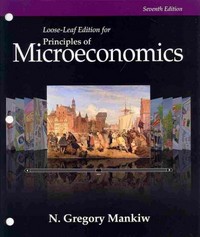These are some questions based on business economics, please provide solutions
(30 points) Consider an expected profit maximizing monopolist who faces an uncertain demand. He supplies q units of goods at zero cost and sells it at price 0 - q, where d is unknown. [The price and the supply level can be negative.] (a) Assuming that 8 ~ N (y. o'), compute the monopolist's optimal supply q and his expected profit under the optimal supply. (b) Suppose that, through market research, the monopolist can learn about 0. In particular, by investing c', he can learn the value of a random variable Y before choosing his supply q, such that 0 = X + Y, X ~ N (0, 1 - c) and Y ~ N (0, c). How much should the monopolist invest? [Note that the utility function of the monopolist is (0 - q) q - c2.] 3. Bergson becomes a benevolent dictator. He has a subjects i = 1,... .n with CARA utilities u1,. . ., Un, respectively. (Write o, for the absolute risk aversion of 2.) The total wealth in the society, Y, is a function of an unknown state w and is normally distributed with mean / and variance of. Bergson can choose any allocation . = (21,...,2,) such that an (w) + +2, (w) 1 from her savings so that her wealth at t + 1 is w4+1 = "(wt - It) if her wealth at t is ary and she consumes r, at t. (b) Find a sophisticated-optimal consumption strategy for her in which the self at any given date s consumes yu's. Compute the constant y and briefly verify that this is indeed a subgame-perfect equilibrium of the multi-agent game. (c) For 8 0. With some probability # 6 (0, 1) she may get sick, in which case she would need to spend L dollars on her health. There is a health-insurance policy that fully covers her health care expenses in case of sickness and costs P to her. (If she buys the policy, she needs to pay P regardless of whether she gets sick.) (a) Find the set of prices P that she is willing to pay for the policy. How does the maximum price P she is willing to pay varies with the parameters M. L. o, and a? (b) Suppose now that there is a test te {-1, +1} that she can take before she makes her decision on buying the insurance policy. If she takes the test and the test t is positive, her posterior probability of getting sick jumps to a * > * and if the test is negative, then her posterior probability of getting sick becomes 0. What is the maximum price c she is willing to pay in order to take the test? (Take P








